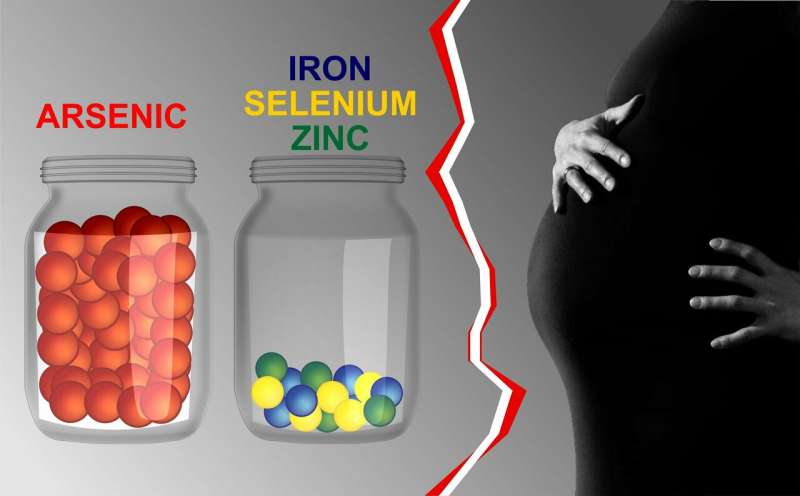Infertility can be caused by microelements disbalance

RUDN scientists report that the imbalance of vital and toxic microelements in a woman's body may cause infertility and be passed to the fetus during pregnancy. The correction of a woman's microelemental status before pregnancy can improve the situation and help conceive a child naturally. The results of the study were published in Reproductive Toxicology.
In order to successfully conceive and carry a child, a woman should have normal concentration of essential microelements in her body. Previously, the scientists from RUDN and TGU, under the supervision of Prof. Y. Kovas and Prof. A.V. Skalny, had found a link between the levels of microelements in the body and women's ability or inability for natural conception. In their new work, the scientists increased the selection of women who conceived naturally and with the help of IVF (in vitro fertilization) and additionally examined the children born from them.
The material of the study was the samples of hair collected from 50 women that used IVF and 158 that got pregnant naturally, as well as from the children born in both groups. Unlike in urine or blood serum, the content of microelements in hair is less variable, and microelements are long preserved in them.
The women that used IVF had increased levels of arsenic, lithium, sodium, mercury, and potassium and deficiency of iron, zinc, and silicon. The children born as a result of the IVF procedure showed expressed deficiency of chrome, iron, magnesium, strontium, and aluminum, and the levels of molybdenum and mercury in their bodies was increased. The hair was collected not immediately after the children were born, but after they reached 9 months, as not all newborns had enough hair to collect from. Moreover, this helped the medics evaluate the influence of breastfeeding on the concentration of microelements.
"Breast milk is the main source of nutrients for the newborns, and they almost completely fail to receive microelements from any other food. Therefore, the element status of a baby is to a certain extent connected to the element status of its mother," said Alexey Tinkov, an employee of the department of medical elementology at RUDN and Demidov Yaroslavl State University, and a candidate of medicine.
While growing, a body is very sensitive to the deficiency of essential elements and the excess of toxic ones. Therefore any changes in the element status in the young age may cause development issues.
Microelement content analysis may be used to make more exact prognoses in cases of infertility. If the condition is caused by the disbalance of microelements, the chances for natural conception will be higher after the element balance is corrected.
"Let's assume a woman is diagnosed with infertility and plans to undergo IVF. If we analyze the microelements in her hair, there is a chance it could reveal increased levels of toxic elements, namely arsenic, and deficiency of essential ones, such as iron, selenium, or zinc. The correction of her element status may facilitate fertility treatment, provided the condition is not caused by serious diseases. It would be useful to study the element status not only to evaluate infertility risks but more importantly to correct the condition or diagnose what caused it," added Alexey Tinkov.
More information: Anatoly V. Skalny et al. Toxicological and nutritional status of trace elements in hair of women with in vitro fertilization (IVF) pregnancy and their 9-month-old children, Reproductive Toxicology (2018). DOI: 10.1016/j.reprotox.2018.10.004


















